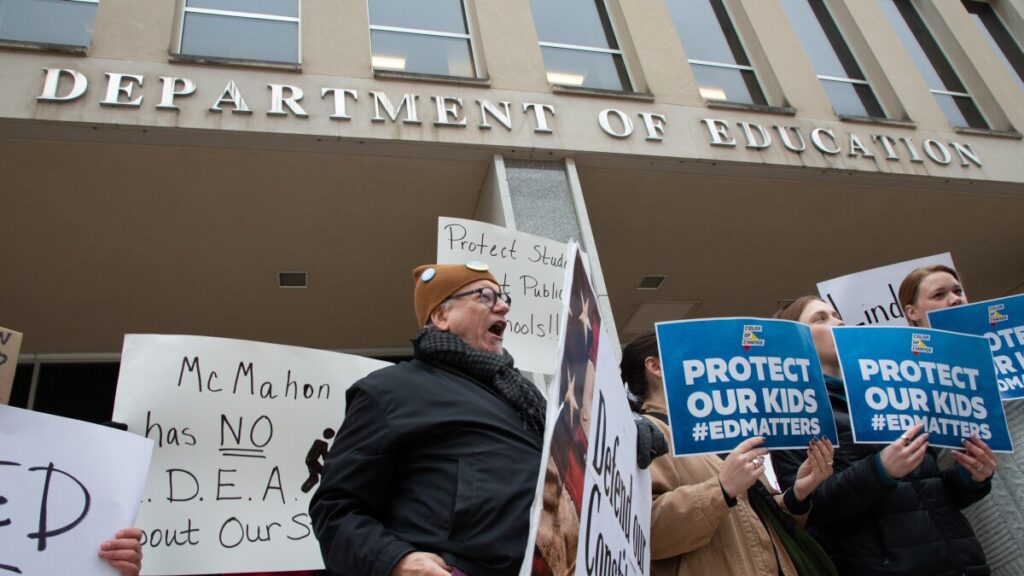In a bold move to reshape federal education policy, former President Donald Trump aimed to dismantle the U.S. Department of Education. However, a federal appeals court recently blocked this initiative, emphasizing the limits of executive power and the importance of legislative oversight.

Trump Wanted to Tear Down the Education Department
| Takeaway | Stat/Detail |
|---|---|
| Federal court blocks dismantling of Education Department | 1st U.S. Circuit Court of Appeals upholds injunction against Trump’s plan |
| Mass layoffs halted and employees ordered reinstated | Over 1,300 terminated employees to be reinstated |
| Civil rights investigations stalled due to staffing cuts | Office for Civil Rights’ caseloads exceed 50 per staffer |
| Education research board members dismissed | 13 Biden-appointed experts fired from National Board for Education Sciences |
The attempt to dismantle the Department of Education represents a significant moment in the ongoing discourse about federal involvement in education. The judiciary’s intervention reaffirms the necessity of legislative processes in making substantial structural changes to government agencies. As the debate continues, the focus remains on balancing efficiency, local control, and the protection of students’ rights and educational opportunities.
A Controversial Executive Order
In March 2025, President Trump signed an executive order directing Education Secretary Linda McMahon to “facilitate the closure” of the Department of Education. This move aimed to transfer key functions, such as student loans and special education programs, to other federal agencies, effectively decentralizing federal control over education. The administration argued that this would return authority to states and local communities, aligning with longstanding conservative goals.
However, critics contended that such a significant restructuring required Congressional approval, as the department was established by an act of Congress in 1979. The lack of legislative involvement raised concerns about executive overreach.

Legal Challenges and Court Rulings
The executive order faced immediate legal challenges from Democratic-led states, school districts, and teachers’ unions. They argued that the administration lacked the authority to unilaterally dismantle the department and that the mass layoffs hindered the department’s ability to fulfill its statutory obligations.
On May 22, 2025, U.S. District Judge Myong Joun issued a preliminary injunction halting the implementation of the executive order and ordering the reinstatement of over 1,300 terminated employees. Judge Joun emphasized that the administration’s actions could cause “irreparable harm” by impeding access to vital educational services.
The Trump administration appealed the decision, but on June 4, the 1st U.S. Circuit Court of Appeals upheld the injunction, stating that the administration’s plan lacked the necessary Congressional authorization.
Impact on Civil Rights and Research
The attempted dismantling of the Department of Education had significant implications for civil rights enforcement and educational research.
Civil Rights Investigations
The Office for Civil Rights, responsible for investigating discrimination complaints in schools, faced severe staffing cuts. Approximately half of its offices were closed, and remaining staff were overwhelmed with caseloads exceeding 50 each. This led to delays in resolving thousands of complaints, leaving many students without recourse.
Educational Research
In a related move, the administration dismissed all 13 members of the National Board for Education Sciences, citing concerns over “partisan influence.” These experts, appointed during the Biden administration, played a crucial role in guiding education research and policy. Their removal raised alarms about the future of evidence-based educational policymaking.
Broader Implications
The court’s decision to block the dismantling of the Department of Education underscores the importance of checks and balances in the U.S. government. While the executive branch has significant authority, it cannot unilaterally dissolve federal agencies established by Congress.
This case also highlights the ongoing debate over the federal government’s role in education. While some advocate for greater state and local control, others emphasize the need for a centralized authority to ensure equal access to quality education and to uphold civil rights protections.






